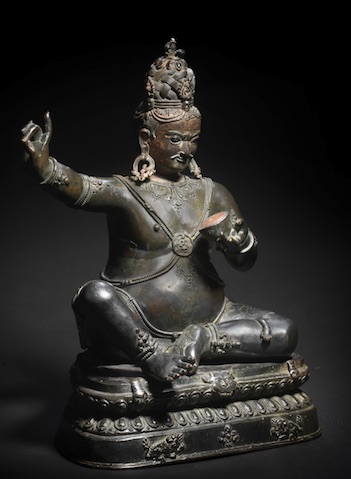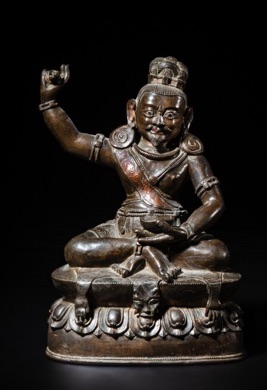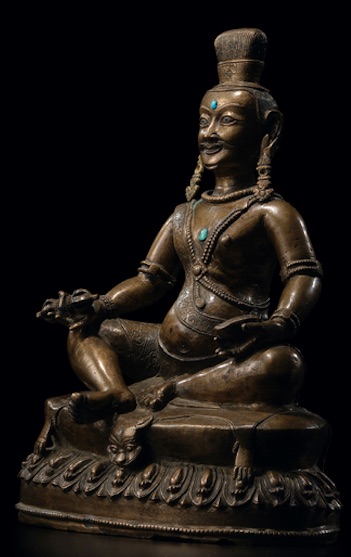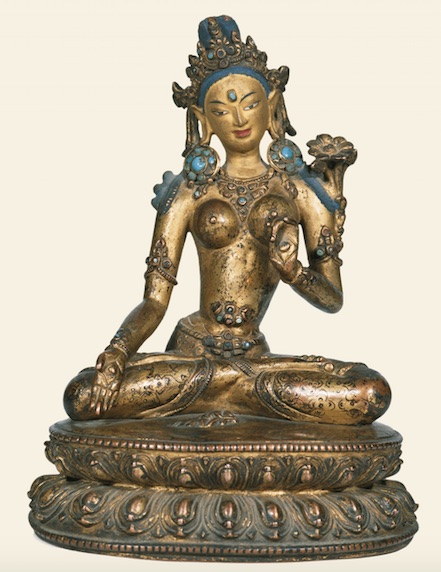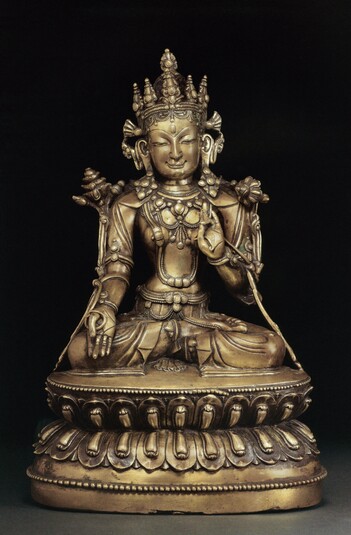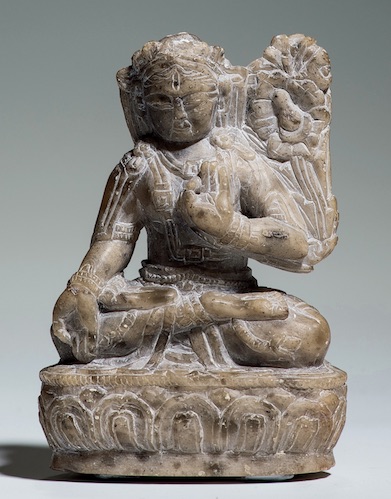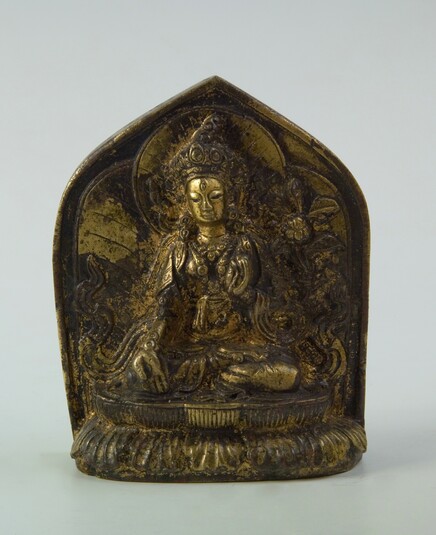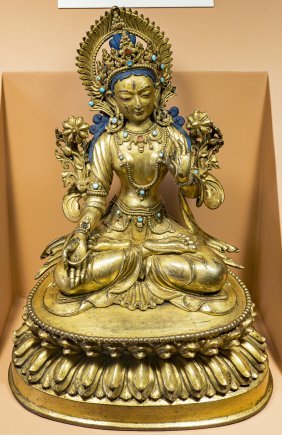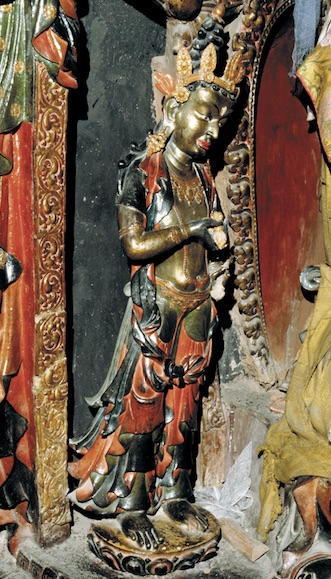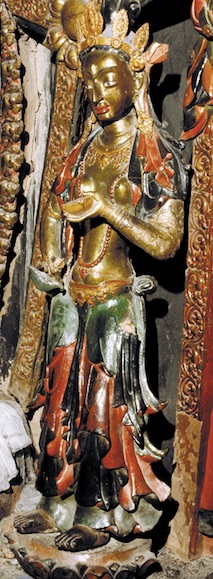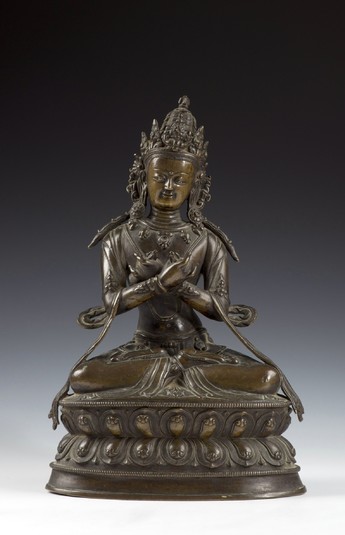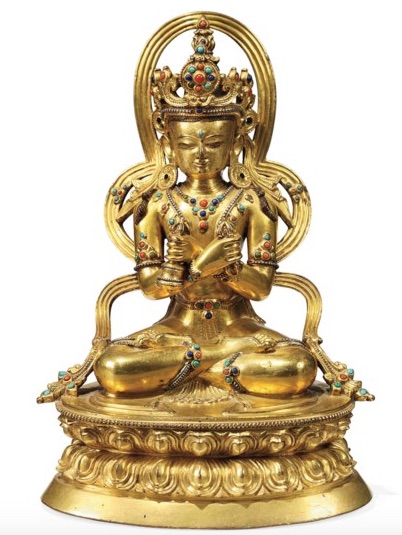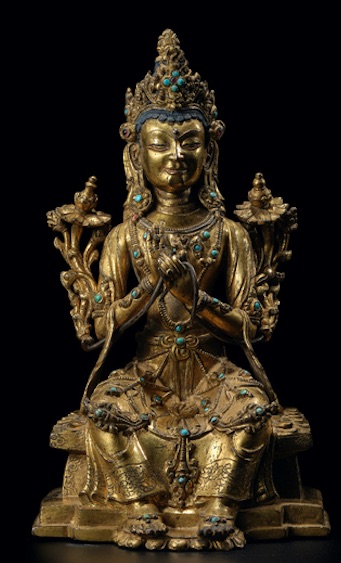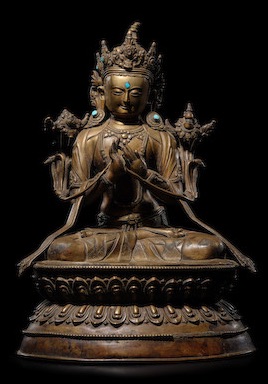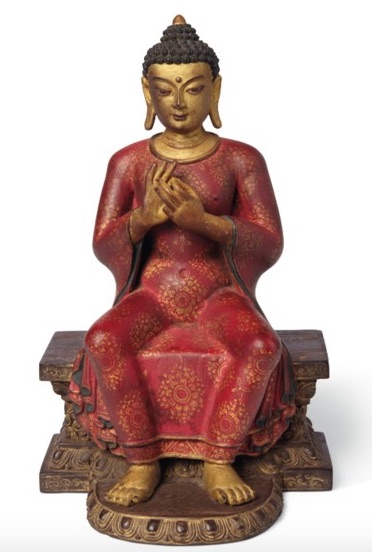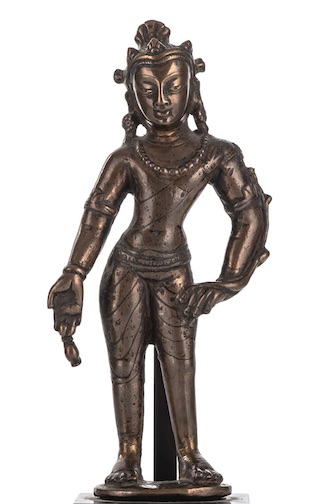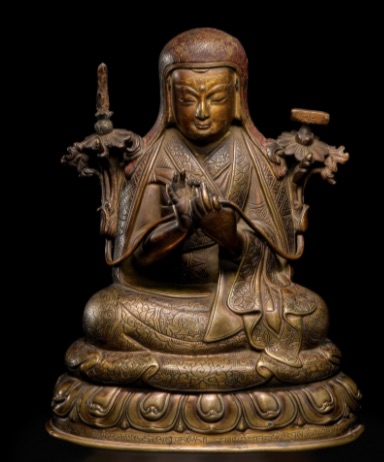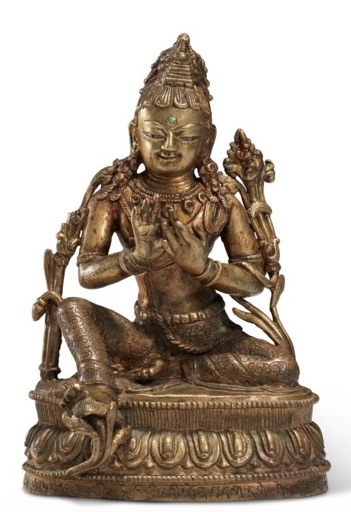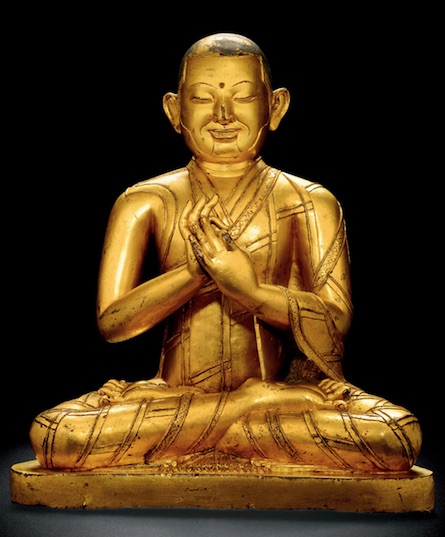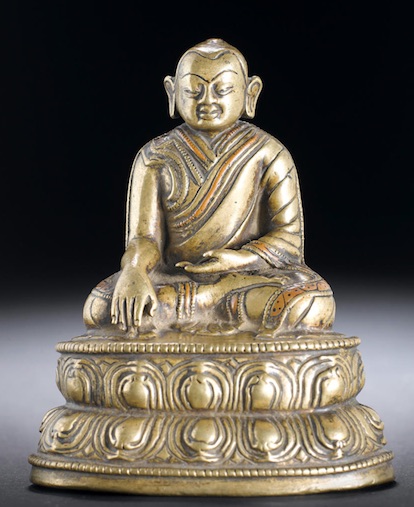Late 15th-16th century, Central Tibet, Tsang province, Tsangnyon Heruka, copper alloy, 41 cm, Jules Speelman collection lot 19, 14th June 2024, photo, close up, and notes by Alvina Ang on Bonhams (Paris).
‘The Mad Man of Tsang’ is always depicted with the appearance of a mahasiddha, with a piercing gaze and a mass of matted hair gathered in an intricately braided chignon, often topped with a half-vajra finial, or in a topknot. Usually dressed in a tiger skin dhoti and adorned with bone jewellery and a cross-belt, he sits in a relaxed manner on a lotus base and may have a meditation strap across one knee or across his chest. He sometimes has a skull cup in his right hand and a ritual staff against his left arm but in most cases he is depicted with a vajra sceptre in his right hand (missing here) and a skull cup in the other, plus the ritual staff occasionally.
This masterpiece includes a beaded tiara with five skulls topped with five leaves, the central one decorated with a buddha effigy, and some very ornate jewellery. The Tibetan master is seated on an animal skin (tiger or leopard) atop a lotus base with two lions and an upright vajra sceptre with ribbons at the front of the plinth.
Circa 16th century, Tibet, Tsangnyon Heruka, copper alloy with copper and silver inlay, 20,5 cm, private collection, Arts d’Asie lot 5, 14th June 2024, Sotheby’s (Paris).
We have seen a few examples of him without facial hair but most sculptures depict him with a moustache and a goatee.
16th century, Central Tibet, siddha, probably Tsangnyon Heruka, brass, silver, copper and stone inlay, 19,3 cm, private collection, Images of Devotion lot 1814, 1st December 2023, Bonhams (Hong Kong).
The above has his hair gathered in a plain topknot held in place with an embroidered headband. His earrings are shaped like vajra sceptres with a foliate pendant and a central cabochon now missing. Instead of an animal skin he wears a loin cloth richly incised with a floral pattern, like his meditation belt.
See biographical notes on Treasury of Lives and the Tsang Nyon Heruka Main Page on HAR

